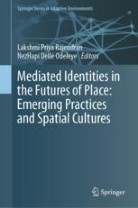
About this book series
The Springer Series in Adaptive Environments presents cutting-edge research around spatial constructs and systems that are specifically designed to be adaptive to their surroundings and to their inhabitants. The creation and understanding of such adaptive Environments spans the expertise of multiple disciplines, from architecture to design, from materials to urban research, from wearable technologies to robotics, from data mining to machine learning and from sociology to psychology. The focus is on the interaction between human and non-human agents, with people being both the drivers and the recipients of adaptivity embedded into environments. There is emphasis on design, from the inception to the development and to the operation of adaptive environments, while taking into account that digital technologies underpin the experimental and everyday implementations in this area.
Books in the series will be authored or edited volumes addressing a wide variety of topics related to Adaptive Environments (AEs) including:
· Interaction and inhabitation of adaptive environments
· Design to production and operation of adaptive environments· Wearable and pervasive sensing
· Data acquisition, data mining, machine learning
· Human-robot collaborative interaction
· User interfaces for adaptive and self-learning environments
· Materials and adaptivity
· Methods for studying adaptive environments
· The history of adaptivity
· Biological and emergent buildings and cities
- Electronic ISSN
- 2522-5537
- Print ISSN
- 2522-5529
- Editor-in-Chief
-
- Holger Schnädelbach,
- Henriette Bier,
- Kristof Van Laerhoven
Book titles in this series
-

-
Disruptive Technologies: The Convergence of New Paradigms in Architecture
- Editors:
-
- Philippe Morel
- Henriette Bier
- Copyright: 2023
Available Renditions
- Hard cover
- eBook

-
Human Activity Sensing
Corpus and Applications
- Editors:
-
- Nobuo Kawaguchi
- Nobuhiko Nishio
- Daniel Roggen
- Sozo Inoue
- Copyright: 2019
Available Renditions
- Hard cover
- Soft cover
- eBook

-
Mediated Identities in the Futures of Place: Emerging Practices and Spatial Cultures
- Editors:
-
- Lakshmi Priya Rajendran
- NezHapi Dellé Odeleye
- Copyright: 2020
Available Renditions
- Hard cover
- eBook

-
People, Personal Data and the Built Environment
- Editors:
-
- Holger Schnädelbach
- David Kirk
- Copyright: 2019
Available Renditions
- Hard cover
- eBook

